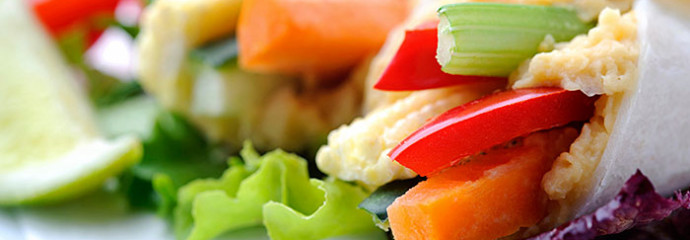
Oxytocin
Posted January 30, 2014 | Nutrition & Health TipsYou know that sensual feeling you get when you give that special someone a nice hug or hold their hand? Or the pleasure you experience as a parent holding your child’s hand? That feeling can be attributed to the release of a hormone called oxytocin. When we engage with those around us, the release of oxytocin stimulates the desire to sustain the interaction. The question then, for individuals who have limited ability for social engagement including eye contact, physical touch, and trust , is how and if oxytocin is working for them naturally in their body.
Oxytocin is known as the “love” or the “tend and befriend” hormone. It is produced by the hypothalamus and secreted into the blood by the pituitary gland. While oxytocin is present every day, its leading role is in reproduction, as it is released to produce uterine contractions during labor and delivery. Shortly after delivery it is released again to increase the muscle contraction of the breast duct tissues to help with milk ejection during nursing. This action also helps to create the bond between mother and child. In fact, in women who experience post-partum depression, serum oxytocin levels have been evaluated and found to be lower than in those who are connecting with their child normally.
Oxytocin is a complicated hormone and is important on a daily basis beyond the scope of reproduction. It is fundamental to social interactions, for the initiation of social engagement, and to perpetuate those interactions by giving positive feedback from the encounter. A common trait in persons with autism is reduced social skills. There can be less eye contact, a decreased desire for receiving or giving affection and comfort, and a preference for being alone. Preliminary studies have begun to assess the effect of giving oxytocin to individuals with autism. A pilot study of 17 kids with autism ages 8 to 16 at the Yale Child Study Center found promising results with a trial of oxytocin. The study involved two groups with one receiving intranasal oxytocin and the other receiving a placebo nasal spray. Using an MRI, they evaluated emotional responses to photographs of people’s eyes and again to objects such as vehicles. They found that those who had received oxytocin showed more activity in functions like empathy and reward than those who received a placebo. In addition, the brain activity showing interest in the objects was decreased for those receiving oxytocin, which is a novel finding. Often, autistic individuals perseverate, or focus on objects or topics that obligates their attention. It seems logical then, if we can decrease the perseverations, they may be more available and receptive to engage socially.
With the promise that this research holds, many families with autistic members are interested in using oxytocin. As the number of people using oxytocin grows, the importance of learning more information increases. A larger, long term study is being federally funded that will evaluate 300 autistic individuals with daily doses of oxytocin for six or 12 months to help us decipher the potential pros and cons of treatment. Initial studies of oxytocin were done on prarie voles. While it did increase their bonding with their mates initially, they found that after several years worth of dosing with oxytocin, the voles began to have increased relations with voles other than their original mates warranting further studies and human studies.
There are several theories to why increased social awareness is seen in autistic children. Three of the most common include that they do not produce enough hormone themselves, that their receptors for oxytocin are desensitized, or that they have too many receptors to be stimulated by their natural, endogenous production even if they are producing a normal amount. Research is inconclusive at this point and results are also variable depending on the individual warranting further studies.
Among the many disciplines that oxytocin plays a role in, digestion is also one of them. Oxytocin reduces cortisol levels, which triggers our fight or flight hormone. If we are able to relax, then our digestion is able to function properly. There are even oxytocin receptors directly in the gut that help with gastric motility and decrease gastrointestinal inflammation. The health of our gut plays a large role in our neurological and mental health as many of the same neurotransmitters in the brain are also produced in the gut. In fact, up to 95% of our serotonin, our happy hormone, is produced in the gut, not the brain. You can find more information about the importance of gut health and the brain in our previous blog, Serotonin: Gut and Brain Connection.
Oxytocin has many facets and is useful in many additional ways. It is also anti-inflammatory and therefore is great for wound healing. In addition oxytocin helps to decrease pain perception and enhance a relaxed parasympathetic state. Increased oxytocin levels have been documented to help reduce pain from headaches, cramps, and overall body aches. The thing is, when we are in pain, we are less likely to produce endogenous oxytocin. Therefore, these situations may warrant the use of synthetic oxytocin.
Oxytocin can be found as a prescription, but the best thing about oxytocin is how easy it is to naturally increase our bodies production. Vitamin C is an important co-factor for the enzyme that produces oxytocin. Vitamin C has been found to independently increase the levels of oxytocin production. In addition, the simple act of thinking of someone, or making eye contact with them increases low levels. Furthermore, physical contact elevates oxytocin levels. Shaking someone’s hand or giving someone a hug can increase the production of oxytocin in the body. The levels of oxytocin rising with contact is not restricted to human kind. They also rise when we connect with our furry and not so furry friends. The best part is the other person/animal receives the same benefit, spreading the love around. Oxytocin levels increase almost instantaneously through interaction with another living creature and the effect lingers afterwards. So get out there and give a hug and reap the benefits for all!

Quick Snacks for Busy Times
Posted January 3, 2014 | Nutrition & Health TipsIntroduction
Being on the go and busy with activities, we sometimes don’t think we have the time to eat healthfully and snacking can mean grabbing whatever is quick and easy, often a few handfuls of potato chips, something from the vending machine, or a stop at the drive-thru window. But with a little planning and stocking the pantry, healthy snacks can be available at all times, even on the go.
Nutrient-dense foods to satisfy
Snacks are the bridge between meals and are an important part of a balanced diet. They help keep our blood sugar stable and are a source of energy and nutrients. The more nutrients your snack provides, the more satisfied and nourished your body will feel. Nutrient-dense foods give you the most nutrients per calorie, in other words the “biggest bang for your buck”. And since about a quarter of our daily calories come from snacks, a smart way to enhance the nutrition quality of your diet can be to focus on snack time.
So what exactly are nutrients and why do I want them in my snacks? They include vitamins, minerals, fiber, essential fatty acids, phytonutrients, and bioactives. Nutrient-dense snacks are a great way to quickly get in the fuel we need to keep our bodies running and running well as we are constantly on the go with extracurricular activities, homework, work, and more. Examples of nutrient-poor snacks include potato chips, donuts, candy bars, and fast food.
Examples of nutrient-dense snacks:
- Homemade trail mix (nuts, seeds, dried fruit, chopped jerky) or a packed one such as Sahale Snacks
- Fruit & Nut Bars either homemade or packaged such as LaraBar
- Chia pudding cups or try the ChiaPod
- Almond butter and apple slices
- Hummus with sliced veggies
- Nut butter spread on high fiber crackers such as Mary’s Gone Crackers
- Greek yogurt and fresh blueberries
- Avocado slices wrapped in SeaSnax
- Shelled edamame drizzled with olive oil and sea salt
Importance of protein and essential fats
Both protein and essential fats are the building blocks that our bodies need to function optimally and are key components to a healthy snack. Our bodies use fats and oils to make cell membranes, nerve tissue, and hormones. We use protein to build and maintain muscle, deliver information throughout the body, repair injuries, and protect us from getting sick.
Protein can be found in: animal products (meat, fish, poultry, dairy), nuts, seeds, legumes, whole grains, and vegetables (in small amounts).
Essential fats are found in: nuts, seeds, cold water fish, grass-fed meat, and pasture-raised eggs. See our previous blog post all about essential fats and why they are essential.
Simple tips for healthy snacks:
1) Plan ahead- homemade snacks like trail mix, muffins, bean dips, etc. can be made in bulk and even frozen to save you time. Prepare and package snacks for the busy week on the weekend or in the evening when you have a moment to get organized.
2) Have a go-to list– as stated in our previous post, having a master list of your or your kids’ favorite snack items will save you some time and stress when trying to think of a quick healthy snack on the go. And remember that a good snack includes at least one fruit or vegetable, protein, and an essential fat.
3) Be creative- use foods with different shapes, textures, and colors to inspire imagination, creativity, and appetite. Examples include rainbow fruit kebobs, “ants on a log” (celery sticks, nut butter, raisins), cutout cookies, or homemade gelatin snacks.
4) Be a “sneaky chef”- an easy way to incorporate nutrients into snacks are to include fresh fruit and veggies, but sometimes a picky eater can refuse to eat these foods. Make a quick smoothie or opt for a prepared protein smoothie such as (Naked Juice); sneak in a vegetable to a muffin or another treat such as these almond-carrot truffles.
5) Get support- seeing a nutritionist can open up a whole new world of snack and food ideas since they are the experts on all things diet related. Since each person is a unique individual, nutrition suggestions and recommendations are tailored to your specific needs.








